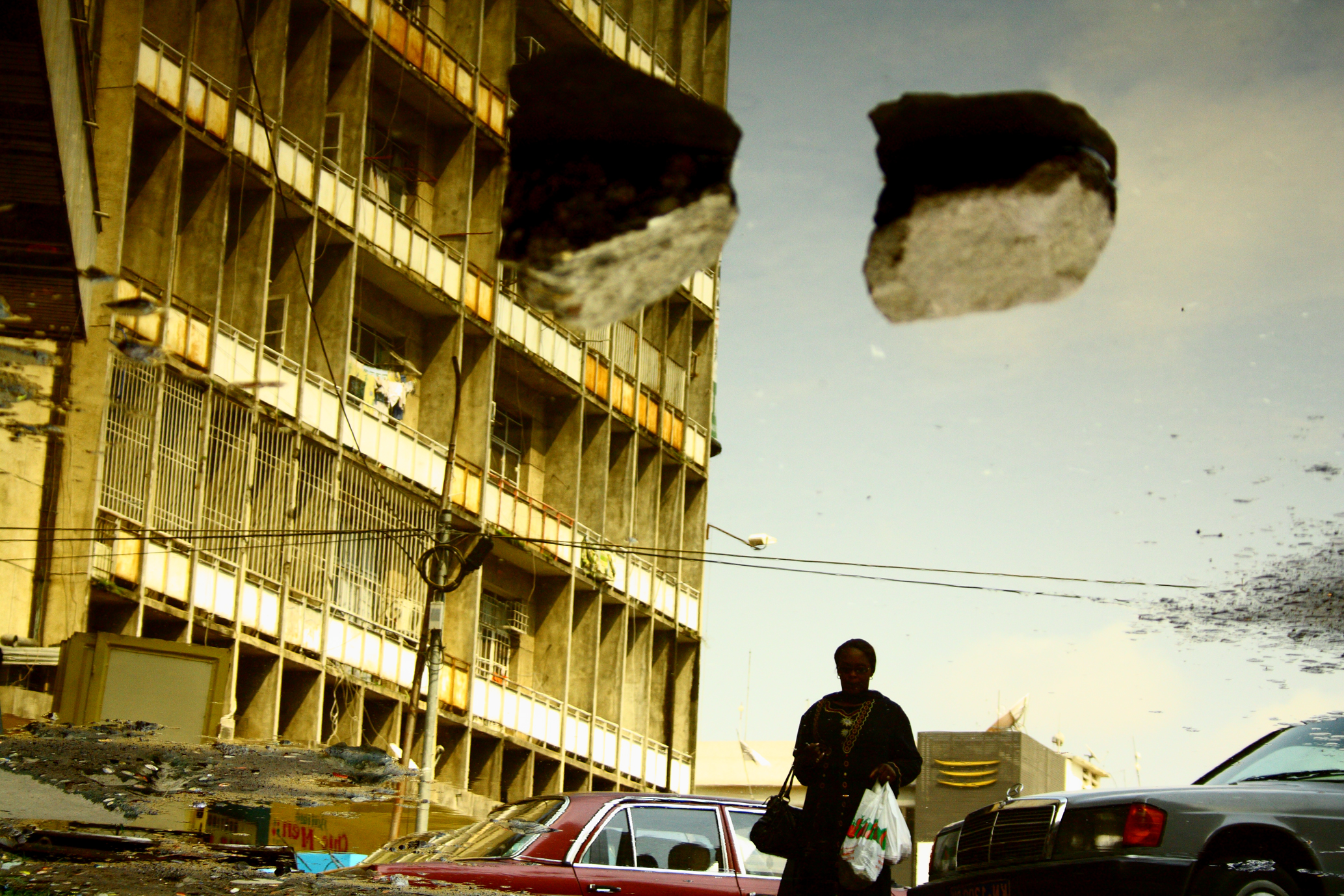Marième Soumaré, “Transferts de fonds: Dangereuse chute pour les ménages et … les banquiers,” Jeune Afrique, May 17, 2020 →.
Gloria Anzaldua, Borderlands / La Frontera: The New Mestiza (Aunt Lute Books, 2012), 19, 25.
(In French, such protective measures are called gestes barrières—literally “barrier gestures.”—Trans.) See Bruno Latour, “Imaginer les gestes-barrières contre le retour à la production d’avant crise,” AOC, March 30, 2020 →.
Stéphane Dufoix, La dispersion: Une histoire des usages du mot diaspora (Éditions Amsterdam, 2011), 16.
Nadia Yala Kisukidi, “Du retour: Pratiques politiques afro-diasporiques,” in Politique des temps, ed. Achille Mbembe and Felwine Sarr (Philippe Rey, 2019), 147–74.
Isidore Ndaywel È Nziem, L’invention du Congo contemporain, vols. 1 and 2 (L’Harmattan, 2016), 143–44.
Raphaël Batsîkama ba Mampuya ma Ndâwla, L’ancien Royaume du Congo et les Bakongo (L’Harmattan, 1999), 4.
Carl Schmitt, The Nomos of the Earth in the International Law of the Jus Publicum Europeaeum, trans. G. L. Ulmen (Telos Press, 2003).
Carl Schmitt observes that the “culmination of this race … was a great international land-appropriation congress—the Congo Conference in Berlin (1884–85).” Nomos of the Earth, 216.
Schmitt, Nomos of the Earth, 219.
Vincent Hiribarren, “Berlin, 1885: Questions sur une conférence,” L’Histoire, no. 477 (November 2020).
Anna Bednik, Extractivisme—Exploitation industrielle de la nature: Logiques, conséquences, résistances (Le Passager Clandestin, 2016). For the situation of the Congo, see Adam Hochschild, King Leopold’s Ghost: A Story of Greed, Terror, and Heroism in Colonial Africa (Houghton Mifflin, 1998).
Apoli Bertrand Kameni, Minerais stratégiques (PUF/Le Monde, 2013), 156.
Kameni, Minerais stratégiques.
Colette Braeckmann, Les nouveaux prédateurs: Politique des puissances en Afrique central, 2nd ed. (Éditions Aden, 2009).
Starting from the situation of the DRC, it is a matter of questioning the logic of the production of life determined by the logic of international commerce. On the African continent, forms of producing life exist that are not connected to the relationship with societies of overabundance. (I thank Felwine Sarr for suggesting this point to me.)
Dufoix, La dispersion, 327.
On the issue of double presence, see Nadia Yala Kisukidi, “Du retour”; and Dufoix, La dispersion, 514ff.
Richard Marienstras, Être un peuple en diaspora (François Maspero, 1975).
Christophe Boltanski, Minerais de sang (Grasset, 2011).
I’m borrowing the term from Ailton Krenak, Ideas to Postpone the End of the World, trans. Anthony Doyle (House of Anansi Press Incorporated, 2020).
Translated from the French by Gila Walker.
